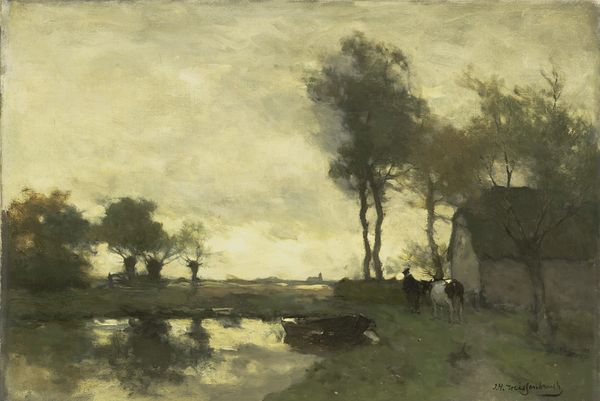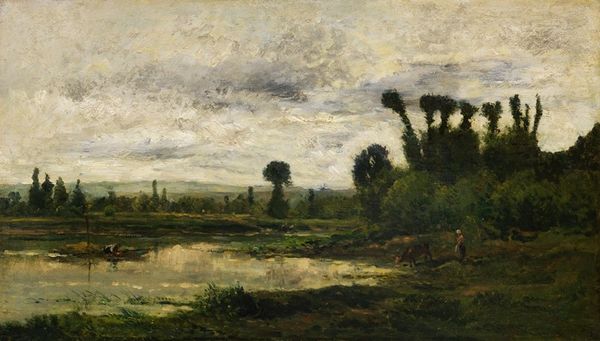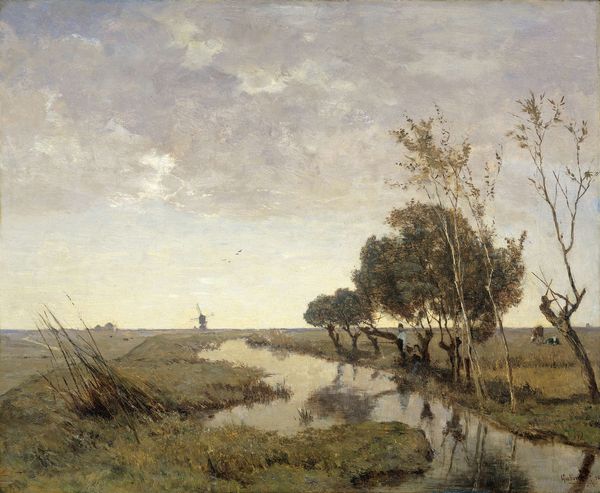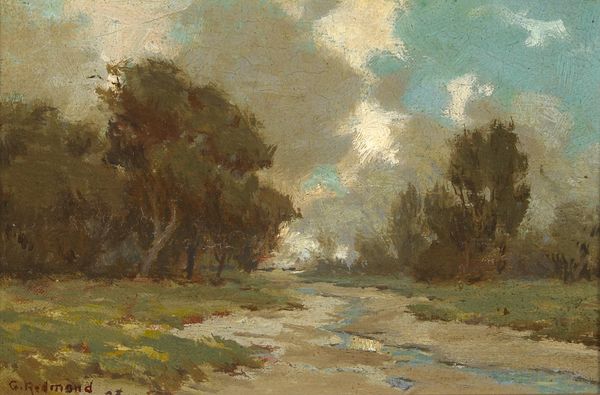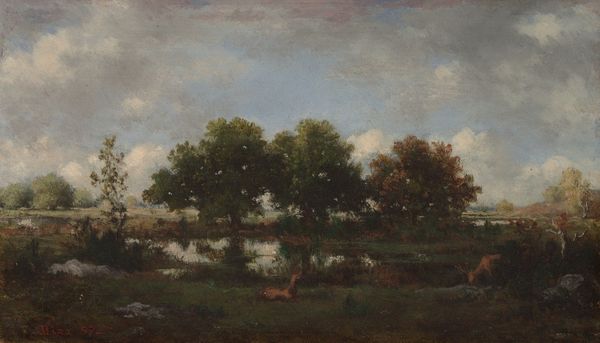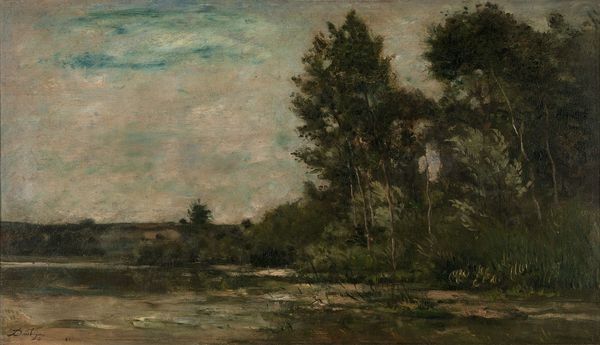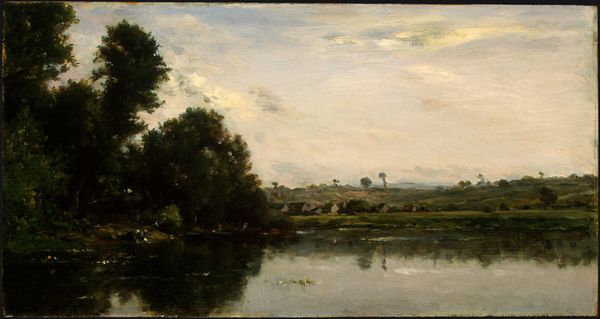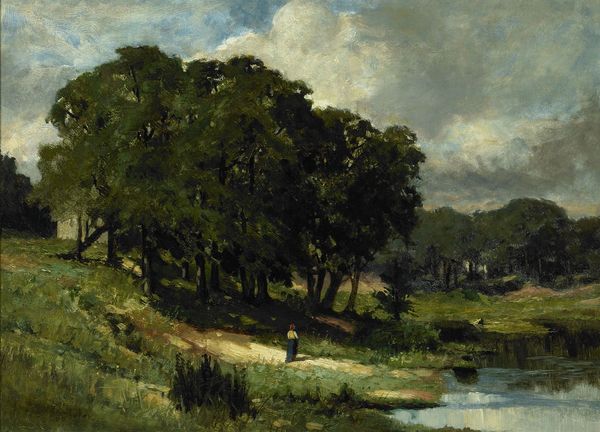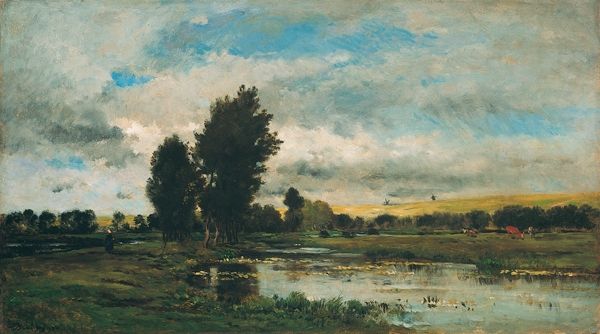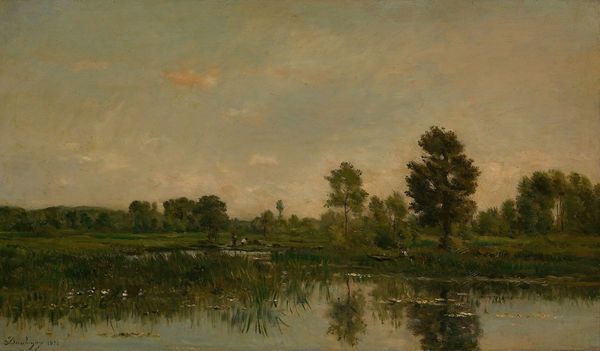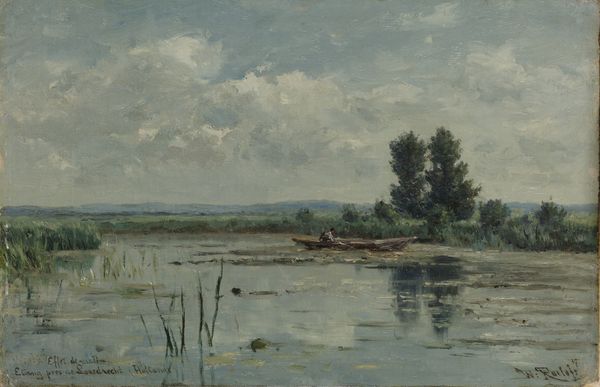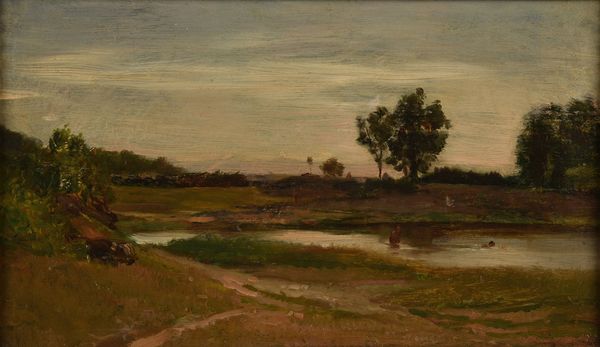
plein-air, oil-paint
#
impressionism
#
plein-air
#
oil-paint
#
landscape
#
charcoal drawing
#
oil painting
#
watercolor
Dimensions: height 41.3 cm, width 66.5 cm
Copyright: Rijks Museum: Open Domain
Johan Hendrik Weissenbruch painted this oil on canvas titled, Autumn Landscape, sometime in the late 19th century. The painting depicts a placid scene in the Netherlands, and its muted palette and simple subject matter are typical of the Hague School. This movement was partly a reaction to the rigid academic painting that dominated much of the art world, with its emphasis on history and mythology. Instead, artists like Weissenbruch turned to the local landscape and the lives of ordinary people. The image cultivates an aesthetic of humble realism. These artists sought a more authentic, democratic form of art, and they were influenced by similar movements elsewhere in Europe, particularly the Barbizon School in France. To fully understand works like this, we need to delve into the art criticism of the period, exhibition records, and artists’ correspondence, to appreciate how artists positioned themselves in relation to the established institutions. That's how we can start to grasp the social and political meanings of their chosen subjects.
Comments
rijksmuseum about 2 years ago
⋮
Weissenbruch spent a great deal of time in the village of Noorden along the Nieuwkoop lakes, where he ventured out to sketch, even in poor weather. He worked up these sketches later in his studio. In Autumn Landscape the paint layers were applied wet-on-wet in an ultimate attempt to capture on canvas the damp atmosphere of the Dutch polder landscape.
Join the conversation
Join millions of artists and users on Artera today and experience the ultimate creative platform.
